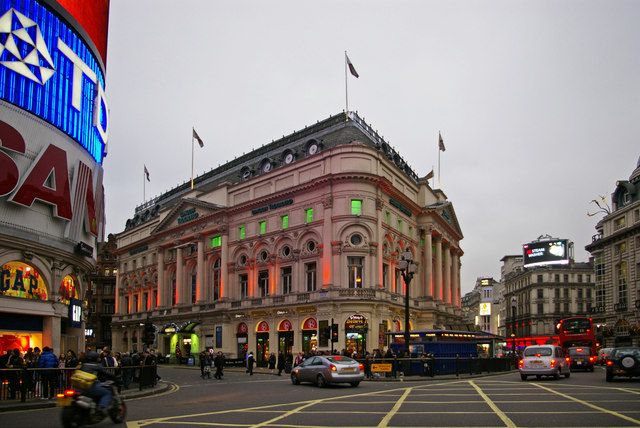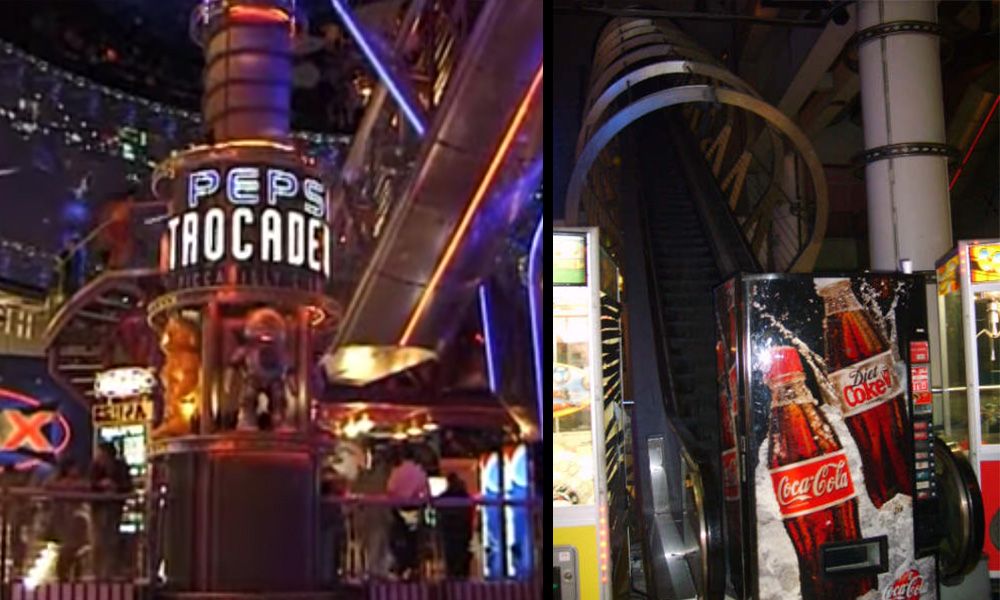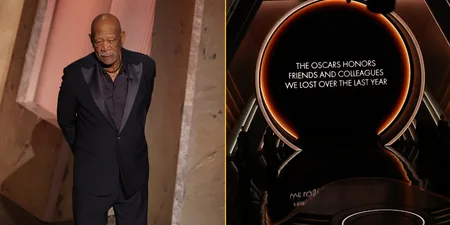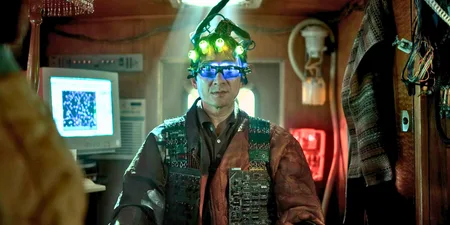It was the ultimate neon wonderland for any 90s kid
SegaWorld London opened in August 1996. Based on Sega’s similar “Joypolis” attraction in Yokohama, Japan, it was essentially a giant indoor video game-based theme park, offering “interactive rides” alongside the biggest arcade in the country. It only existed for three years, but for games fan who visited it as a child or a teenager it left an indelible memory of an overpowering dayglow digital playground, unlikely to ever be recreated.
SegaWorld lived at the top of the Trocadero, a nine-floor ninetieth-century former restaurant turned “leisure complex” next to London’s famous Piccadilly Circus. Built in 1896, it was redeveloped in 1984 as a tourist hotspot including a cinema, a Guinness Book of World Records Exhibition, and most importantly, a 2-floor videogame arcade named Funland which soon became beloved by the capital’s gamers.
However, it struggled to find tenants, and it was taken over by property group Burford in 1994. By 1997 they had secured sponsorship from Pepsi, and the site became home to a massive HMV, a Planet Hollywood, an IMAX cinema, and the 100ft Pepsi Max Drop ride. Nickelodeon UK broadcast live from there. By the mid-to-late 90s, it had become the ultimate place to get high off sugar in the school holidays and run around amongst the neon lights and blaring music.

And this is where Sega comes in. At this point, Sega were on top of the world – especially in the UK. Thanks to launching nearly two years earlier, the Mega Drive was beating its rival the Super Nintendo. Sonic The Hedgehog was everywhere. Sega started opening a chain of SegaWorld branded arcades, beginning in Bournemouth. The sizeable arcade at the Trocadero was already a hotspot for UK gamers in the early 90s, and discussions began in January 1995 about bringing the Joypolis concept to Europe. A year later, construction was under way on the £45 million project, taking up the top seven floors of the Trocadero.
It would open to the public in August 1996. It was heavily hyped in video game magazines at the time, and also in Sega’s own Sonic The Comic. Chris Evans even reportedly attended the opening. Initially, there was a flat entry fee, which gave you unlimited access to rides and arcades once you were inside. They hoped for 1.7 million visitors in the first year. Things did not go to plan.
Access to SegaWorld was via the ‘Rocket Escalator’ (“Europe’s largest, above-ground, see-through escalator” according to the promo material), a giant neon bridge to the stars that looked like something out of Tron. Upon reaching the top floor, visitors were welcomed by a giant fibreglass Sonic The Hedgehog, and free-to-play Sega Saturns. Virtura Fighter and Daytona machines stretched as far as the eye could see, interspersed only by Sega merchandise stalls and a McDonalds. Its low lighting and lack of windows created a hallucinogenic neon nightmare worthy of a Nicholas Winding Refn movie, a pop culture fever dream, and probably gave every parent that stepped foot in there an instant migraine.

400 arcade machines were spread across six themed floors: Combat Zone (fighting games), Race Track (racing), Flight Deck (flight sims), Carnival (“family” games and traditional seaside fair like 2p machines and crane games) and Sports Arena (sports sims, obviously). The Flight Deck even had a real ex-RAF Harrier Jump Jet (which was towed through London as a publicity stunt), and the Race Track became home to one of Damon Hill’s F1 cars. Interspersed were seven “high-tech interactive ride attractions,” with names like Space Mission and Aqua Planet, that most involved wearing 3D glasses or VR helmets, and being driven around in ghost train-style carts.
And then came the decline.
SegaWorld London was not a success. It only had 950,000 visitors in 1997 – far short of the 1.7 million visitors they hoped for. The entry fee was scrapped in the hope of attracting more footfall, with an individual cost for each ride instead. That didn’t work. Sega’s ten-year deal had a three-year break clause if they didn’t hit a £3 million profit target. So, after making a loss of £2.4 million a year, in 1999 the Sega sponsorship was dropped and the arcade was rebranded again as just “Funland.”

The Trocadero itself also started to decline – Alien and James Bond interactive attractions came and went. The IMAX cinema shut after a much bigger one opened on London’s South Bank, and it just became a standard multiplex. The HMV got smaller. The Pepsi Max Drop was moved to a theme park in Portsmouth. The Funland arcade shrank, though it did continue to foster an active gaming community, particularly amongst rhythm and dancing games. But the ghost of SegaWorld remained. The Rocket Escalator was still there, but it sat dormant and decaying, its strip lighting turned off for the final time. There was no effort to hide that half the building was empty – instead of covering the Rocket Escalator, a vending machine was merely dumped in front of it. At the top, the once proud Sonic statue peered down lonelily, guarding the empty venue.
The cinema became the upscale Picturehouse Central, segregated off with an entrance away from the Trocadero. Stalls selling tourist tat flooded the retail units. What was once home to the most exciting videogames on the planet now sold knock off Wills & Kate memorabilia and those fake football shirts that say ‘Manchester The Best’ where the sponsor should be. In 2015 retailers were raided for selling fake goods.

The last few times I visited, it was a depressing experience. It was empty and echo-y, and felt like the set of a straight-to-video dystopian sci-fi movie. Gangs of feral teens loitered and played DDR. In my head, I imagined they’d been born and raised in the Trocadero, never seeing sunlight, surviving on discarded popcorn and Slush Puppies, sleeping in the Aqua Planet ride, worshipping the Sonic statue.
Plans to turn the building into a hotel were approved in 2009, and Funland closed in 2011. Some of the arcade machines were saved by gaming café The Heart of Gaming and now live in their venue in Croydon. In 2014 a TK Maxx was reported to be opening there, following being rejected in 2009. It will inevitably become flats, a hotel, something like that. But for a while in the 1990s, it was the most exciting place on Earth.
































